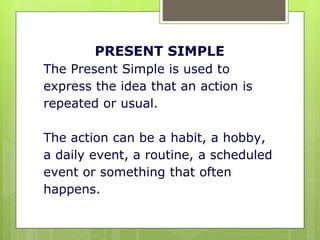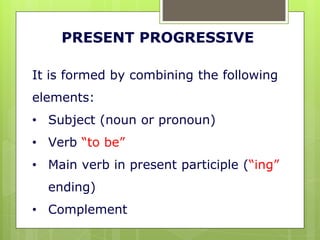This document provides an overview of the present simple and present progressive tenses in English. It explains that the present simple is used to describe repeated or usual actions like habits or routines, and is formed using the basic verb form. The present progressive describes actions happening now, and is formed using the verb "to be" plus the present participle verb ending in "-ing". Examples of each tense are provided to illustrate their proper usage.










